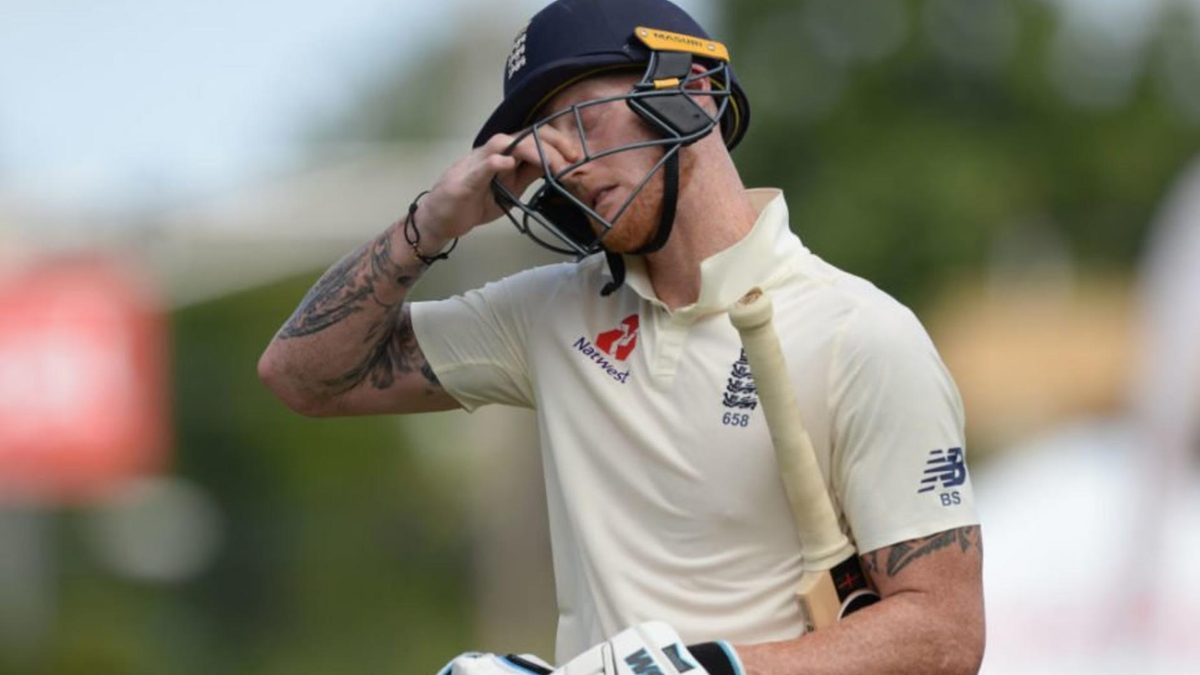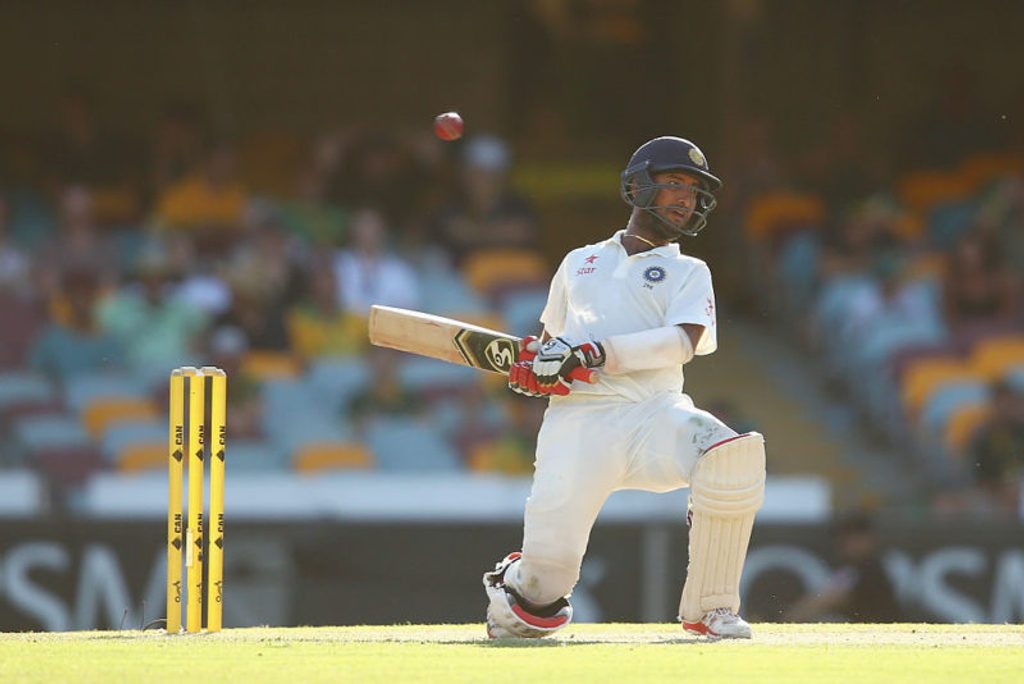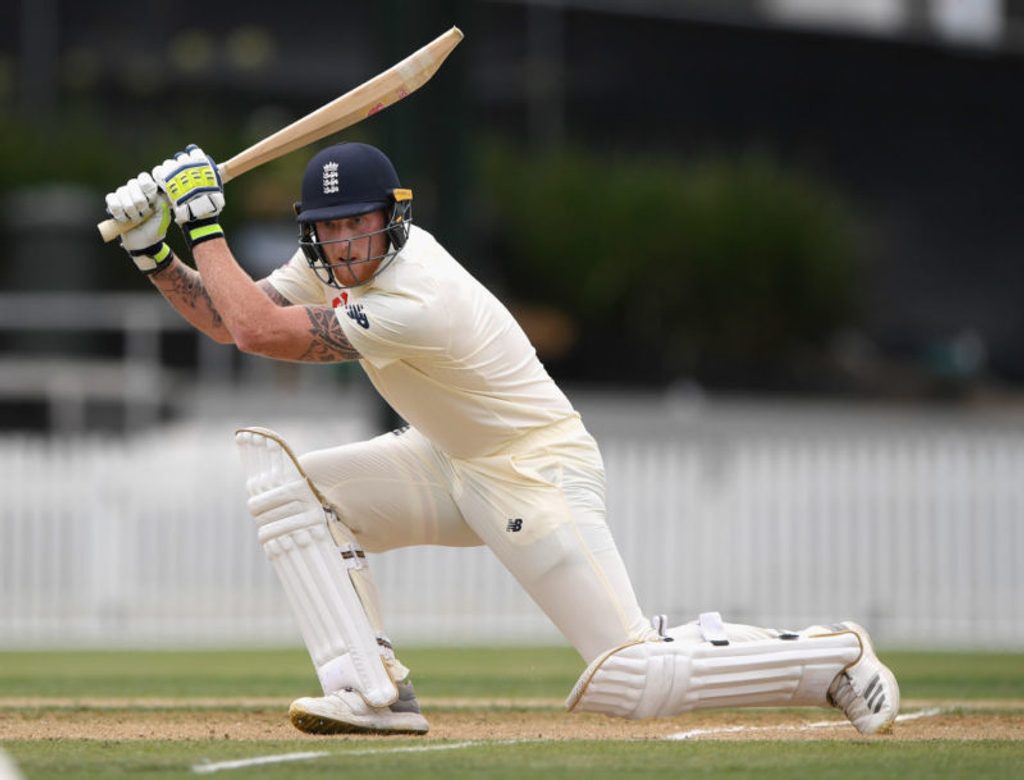
Ben Stokes is England’s surest player of the moving ball and has an excellent defensive technique. So why, wonders Ben Gardner, has his embracing of a more conservative approach not reaped rewards?
Ben Stokes’ returns in England’s first Test against the West Indies were a microcosm of his performances over the last year. He claimed match figures of 6-140, bringing England back into the game on day one and threatening to do so again late on day three. With the bat he contributed a 17-ball duck in the first innings and an 82-ball 34 in the second – little to shout about, but showing he was trying to knuckle down, a responsibility abdicated by most of his teammates.
With the ball he’s developed and matured into a seasoned, consistent performer, perhaps even England’s most versatile seamer. He can perform a number of roles excellently, and, crucially, he now knows when to employ which line of attack. When it’s overcast he can swing the ball prodigiously, as he did on the fourth morning at Edgbaston against India. When a breakthrough is needed he can bang it in short, as he did in Sri Lanka to good effect, or he can hold up an end and build pressure when neither of those two options is possible.
The prevailing narrative dictates that the story is similar with his batting. That after Bristol, Stokes has become a more refined batsman than the out-and-out hitter he was in his youth, able to weather the tough periods as well as cash in when on top.
 Ben Stokes has progressed with the ball more than the bat
Ben Stokes has progressed with the ball more than the bat
To an extent, that’s true. Since the start of 2018, Stokes has been more cautious, defending 36.3 per cent of balls compared to 31.9 per cent in his career up until that point, and attacking 21.4 per cent of balls, compared to 31.3 per cent beforehand.
It’s an approach that, in theory, makes sense. Stokes is one of the most proficient players of the moving ball England have had in recent years. Against balls which swing more than the global average he averages 71.67, the most of any England player in CricViz’s database, while just five of those average more than the 32.43 he does against balls which seam more than the global average, none of them current players.
Perhaps surprisingly for someone who has played two of the most attacking innings of the decade – his 258 at Cape Town and 84-ball ton at Lord’s each sit inside the top 10 hundreds of the 2010s for attacking-shot percentage – statistically Stokes’ defensive game is stronger than his attacking one. With defensive strokes he has a dismissal rate of 76.3 balls per wicket, while with attacking strokes he averages 49.55. For all top seven batsmen in Tests featuring Stokes, the cumulative defensive-shot dismissal rate is 65.3, while the average with attacking shots is 55.93.
He should be perfectly suited to basically being a proper, classical Test match batsman, with a game-plan built on defence, keeping out the good balls and waiting to pounce on the bad. In a line-up stacked with attack-minded batsmen, that should be just what England need. The only problem is, it isn’t working, with Stokes averaging 25.95 since the start of 2018, compared to 35.72 before then.
 Pujara is the model for the defensive Test batsman
Pujara is the model for the defensive Test batsman
Part of this can be put down to the tougher batting conditions England have had to contend with in the last year or so, but not all of it. Up until the start of 2018, top-seven batsmen in Tests Stokes played in averaged 36.12, meaning he was just about on par. Since then they’ve averaged 31.17, with Stokes off the pace.
Stokes’ new approach simply isn’t having the effect it should be. You’d expect a batsman who attacks fewer balls to average more when doing so, since, in theory, they should only be attacking when they feel sure of success. This is borne out by the numbers of two of the most successful traditionally defensive batsmen of the age, Azhar Ali and Cheteshwar Pujara, who each attack less than 20 per cent of balls they face, but average 68.80 and 153.80 when attacking respectively.
Instead, Stokes’ attacking-shot average has dropped since the start of 2018. He is scoring less quickly than he was before the start of 2018, and, with his defensive-shot dismissal rate also having dropped, isn’t occupying the crease for longer to make up for it.
There are a few possible explanations for this. Stokes could, of course, simply be out of form, but there are reasons to believe it is more complicated than that. There is evidence to suggest that, as he ventures away from a belligerent approach, Stokes is finding it harder to fully throw himself into attacking opportunities when they present themselves. This is supported by a drop in his attacking-shot strike-rate, which has fallen from 8.88 runs per over to 7.88 runs per over.
 Stokes scores less quickly with attacking strokes since the start of 2018
Stokes scores less quickly with attacking strokes since the start of 2018
There is also the possibility that he is choosing the wrong balls to attack, or, more accurately, to defend. While, as you’d hope, he is attacking marginally fewer length balls than he was before – 13.3 per cent compared to 18.9 per cent – the real drop-off has come when facing short balls and half volleys, which Stokes has attacked 42 and 43.6 per cent of the time since the start of 2018. Before that, he was attacking each 71.0 and 64.5 per cent of the time respectively.
Further evidence of his poor shot selection is that he’s now attacking more back of a length balls, while a significant drop-off against short balls and half volleys speaks to a scrambled mind. Before 2018, he was averaging 189.33 and 64.83 against half volleys and short balls respectively. Since, those figures have dropped to 40.33 and 37.00.
Stokes’ new approach is admirable, and indicative of a man who has come to recognise his value to England’s side, and the value he himself places on contributing and sharing in their success. But unless he finds a way to pick which balls to attack more selectively, and to fully go after them when he does, Stokes’ supposedly responsible, defensive method isn’t helping England; it’s hindering them.








